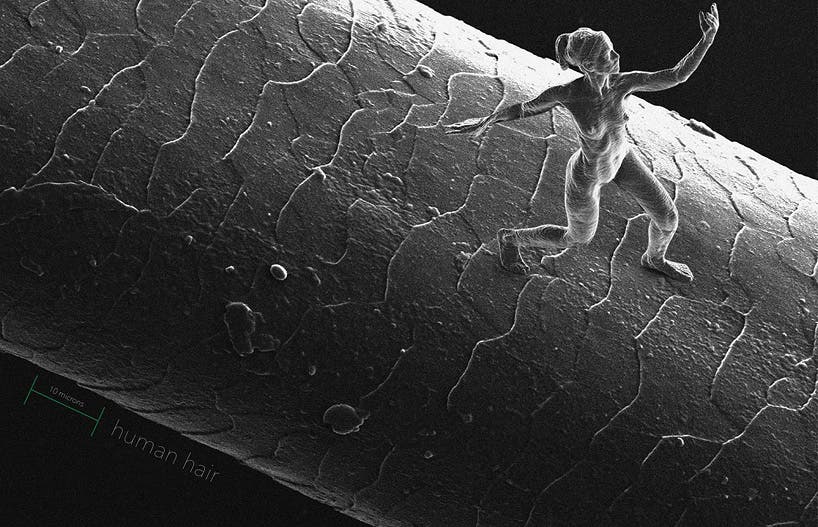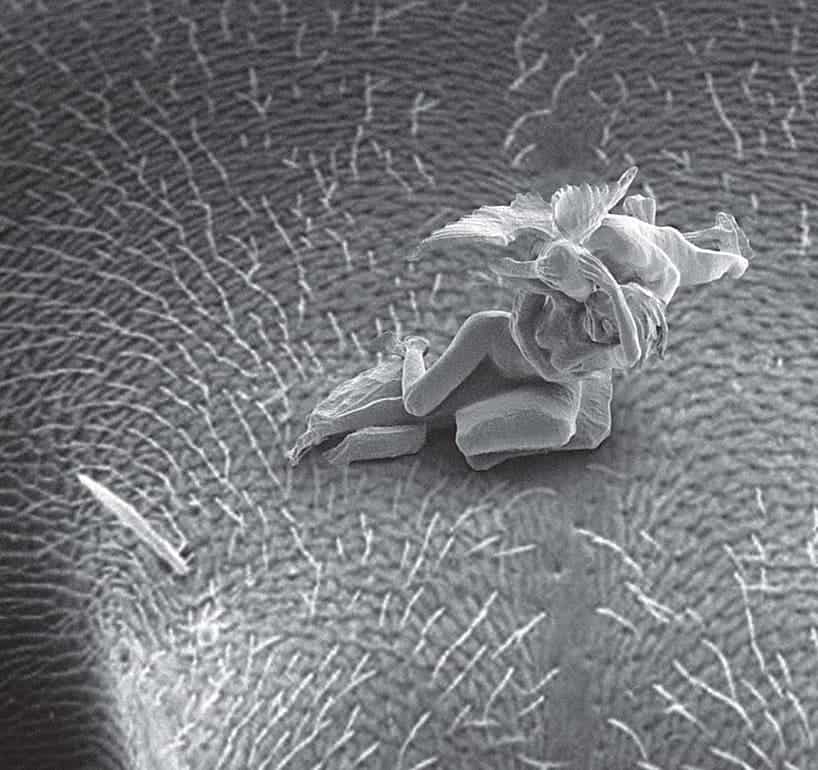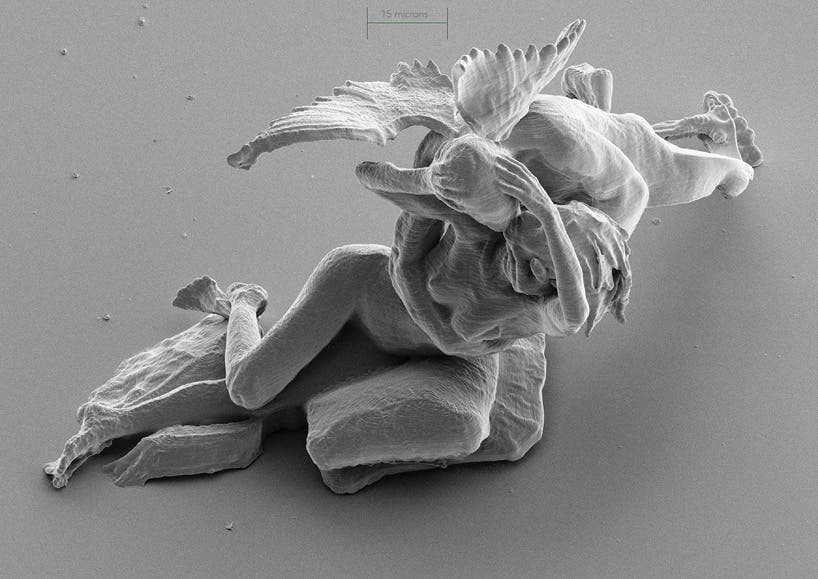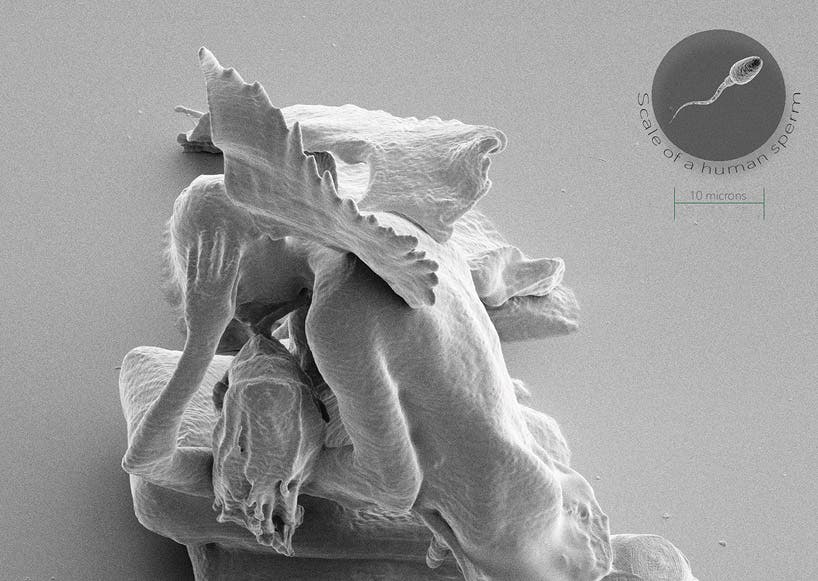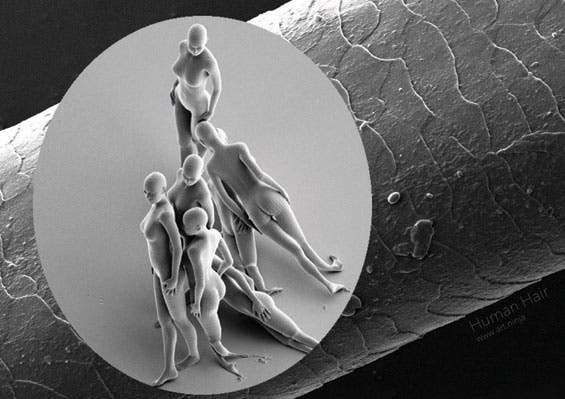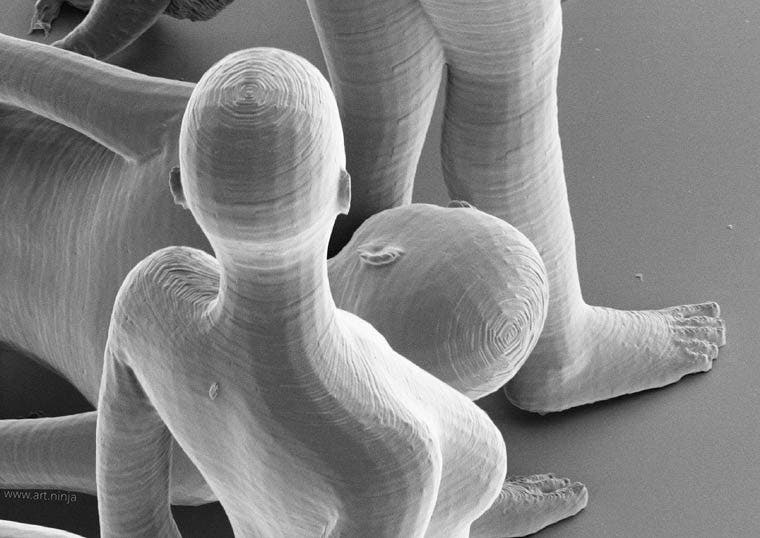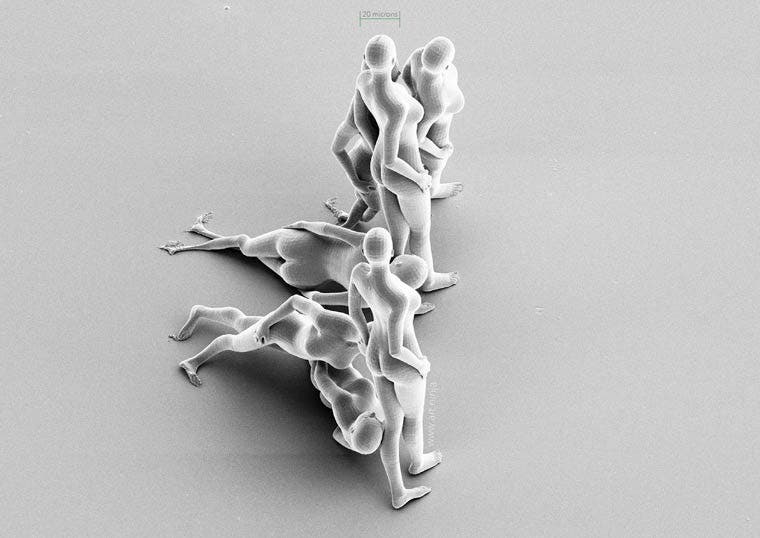How many angels can dance on the head of a pin? This nonsensical question actually has meaning in the world of Jonty Hurwitz, an anamorphic artist. For his latest project, Hurwitz teamed with the Karlsruhe Institute of Technology and the Weitzmann Institute of Science to 3D print sculptures that recreate the smallest human forms ever. These figurines are only 20x80x100 microns, or roughly the scale of a human sperm, yet the level of detail and intricacy shown in the works is absolutely mind-blowing. One can clearly see (not with the naked eye!) beautiful human forms in all the details and even individual feathers in Cupid’s wings. Even fingers can be distinguished if you look close enough in the images made using an electron microscope.
To make these amazing sculptures, the team used ground-breaking 3D printing technology that employs two photon absorption. Yes, these models that are smaller than an ant’s eye were built using quantum physics!
“The absolute fact is this: the human eye is unable to see these sculptures. In your hand all you see is a small mirror with … nothing on it. The only way to perceive these works is on the screen of powerful scanning electron microscope. Can you be sure of its existence if your basic senses are telling you that nothing is there?”
The project, divided into works like “Trust”, “Cupid and Psyche: The First Kiss”, and “Intensity”, explores the boundary between myth vs reality and science vs legend.
“As technology starts to evolve faster than our human perception is able to handle, the line between science and myth becomes blurred.
We live in an era where the impossible has finally come to pass. We have, in our own little way we have become demigods of creation in our physical world…. The nano works that I present to you here represent more that just a feat of science though. They represent the moment in history that we ourselves are able to create a full human form at the same scale as the sperm that creates us in order to facilitate the creation.”
